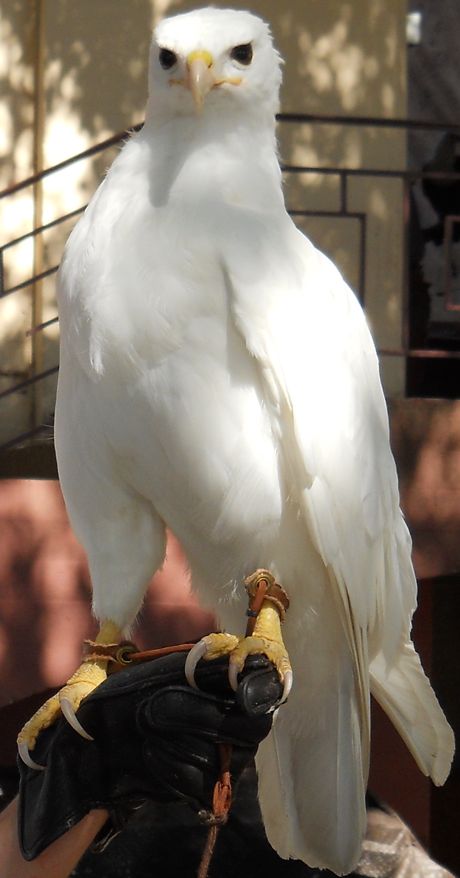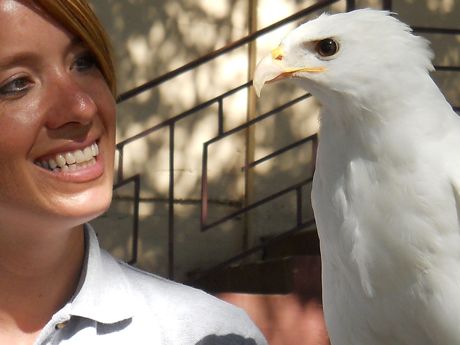A Leucistic White Red-Tailed Hawk
An exceptional red-tailed hawk, Lakota may be aware of her special beauty.
by Bob Kerstetter
Lakota first came to the attention of humans when a birds of prey rehabilitation center rescued her from starvation in the wilds of Louisiana, a southern state of the United States. Flying free after her recovery, the red-tailed hawk was soon starving again in the bushes and boondocks of the Bayou State. Her second redemption became permanent. As with many avian hunters, Lakota had found the natural world too difficult for living.

A red-tailed hawk, Lakota is leucistic, having no pigment in her feathers. Her honey and deep black eyes show she is not albino.
“Seventy five percent of birds of prey die during their first year of life,” says Steve Martin, bird trainer and president of Natural Encounters, an animal training organization headquartered in Winter Haven, Florida. Martin was in Dallas, Texas putting on the Kroger Birds of the World Show during the State Fair of Texas.
As part of the exhibition, Lakota glides from the Texas Star ferris wheel to the hand of her trainer on the amphitheater stage. Exiting in an easy float with wings fully spread, she pulls in tight for her very fast descent—a streak of white.
Unique among her peers, Lakota stands out because of her lightening color. According to Martin, she is very rare. Her feathers shine pure white, with no amber flecks on her chest, brown in her wings or red on her tail. Her legs are yellow with translucent tan talons.

Lakota and Lindsey, hawk and handler, after the Kroger Birds of the World Show at the State Fair of Texas in 2010. Lakota is a pure white red-tailed hawk.
“Lakota is leucistic,” says Lindsey, one of Lakota’s handlers. “She has no pigment in her feathers. She is not albino. An albino would have pink eyes.”
Lakota sees the world through deep black centers rimed in dark honey. She watches strangers with a wholehearted interest. An exceptional red-tailed hawk, Lakota may be aware of her special beauty.